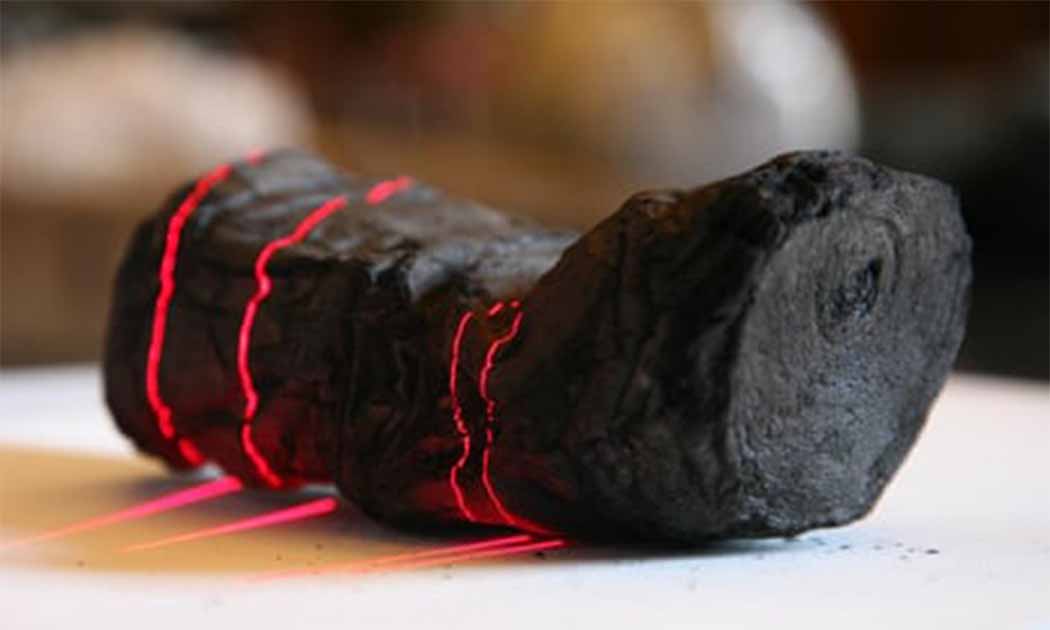AI Unlocks Secrets from Charred Herculaneum Scroll
A 21-year-old computer-science prodigy has used artificial intelligence (AI) to achieve what many thought impossible: reading the interior text of a carbonized scroll from the ancient Roman city of Herculaneum. This significant find has remained inaccessible since the devastating volcanic eruption of 79 AD, which also buried the famed city of Pompeii. The discovery could pave the way for deciphering hundreds of texts from the only preserved library of Greco-Roman antiquity.
The Vesuvius Challenge
Nature reports that the student, Luke Farritor from the University of Nebraska–Lincoln, employed a machine-learning algorithm to discern Greek letters on the papyrus. One deciphered word, πορϕυρας (porphyras), translates to 'purple'.
The scrolls have been an enigma for scholars since their discovery in the 18th century. Residing in what is believed to have been a luxury villa possibly belonging to Julius Caesar's father-in-law's family, these scrolls could potentially revolutionize our understanding of ancient history and literature.

Fragments of Herculaneum scrolls (CC by SA 4.0)
The challenge of reading the text arises due to the carbon-based ink, essentially a mixture of charcoal and water, used on the scrolls. It blends into the papyrus in scans, rendering it invisible. This difficulty led Brent Seales, a computer scientist, to establish the Vesuvius Challenge, encouraging researchers worldwide to virtually unravel the mystery. The competition offered various prizes, with Farritor winning the 'first letters' prize of $40,000.
Why Purple?
The algorithm's success in identifying the word "purple" in the Herculaneum papyrus offers a tantalizing glimpse into the potential content of these ancient scrolls. As a rare and expensive dye extracted from sea snails, purple was a symbol of opulence and prestige. This revelation provides a tantalizing hint about the content and context of these ancient scrolls. Could they delve into the socio-economic intricacies of ancient Rome? Or perhaps provide insights into trade, fashion, or the elite's lifestyles?
- The Only Library Ever Recovered from Antiquity: The 1800 Scrolls of Herculaneum
- AI Algorithm Identifies Individual Dead Sea Scroll Scribes

Computer engineers found an ancient Greek word in one of the scrolls: πορφύραc, meaning purple. Photograph: University of Kentucky
The Villa of Papyri
The charred scroll that was examined was originally found in a library in a villa thought to be the home of a Roman statesman, or even Julius Caesar's father-in-law, Lucius Calpurnius Piso Caesoninus. The site, now known as the Villa of Papyri, was excavated by archaeologist Karl Weber between 1970 and 1975 by means of underground tunnels. It was found to contain nearly 2,000 ancient papyrus scrolls, the ‘Herculaneum papyri’.
When Vesuvius erupted, the invaluable library was already packed in cases, prepared for evacuation to a safer location. However, it was engulfed by the pyroclastic flow before it could be moved. The eruption subsequently blanketed the area with approximately 65–82 feet (20–25 metres) of volcanic ash. This intense heat charred the scrolls but also preserved them, making it one of the rare libraries from antiquity that has survived to this day.
According to British linguist and paleographer David Diringer, more than 340 of the scrolls are almost complete, about 970 are partly decayed and partly decipherable, and more than 500 are completely charred.
Despite the success in unravelling and reading many of the scrolls, there still remained hundreds of scrolls in which the internal structure was too compact and fragile to unroll. Complicating matters is the use of carbon-based ink on these scrolls, which blends almost seamlessly with the charred papyrus, unlike more detectable metallic-based inks. However, with the advent of AI, there's a renewed sense of hope in unlocking their secrets.

The Villa of Papyri at the archaeological site of Herculaneum (Erik Anderson / CC by SA 3.0)
AI in Archaeology
This breakthrough is not just confined to the Herculaneum scrolls. The use of AI in archaeology and historical studies is burgeoning. Last year, an AI tool named Ithaca was introduced, assisting scholars in determining the date and origin of unidentified ancient Greek inscriptions.
AI systems are now adept at identifying and analyzing rock art, as well as identifying potential archaeological sites by detecting patterns that suggest buried structures. For site preservation, AI monitors landscape changes to predict potential threats like erosion, climate change, or illegal excavations. AI-powered underwater robots are revolutionizing the exploration of submerged historical sites. Beyond all these, AI enables virtual reconstructions, creating realistic visualizations of historical sites, immersing researchers and the public into the digitally recreated world of the past.
Seales envisions machine learning unveiling the "invisible library," a term for texts that exist but remain unseen, including ancient manuscripts and papyri used in various historical artifacts.
The Vesuvius Challenge remains ongoing, with participants and observers alike optimistic about further groundbreaking discoveries. Farritor's achievement sets the stage for more revelations from these ancient scrolls and underscores the transformative power of modern technology in shedding light on the past.
Top image: AI tech scans carbonized Herculaneum scrolls. Photograph: University of Kentucky.

















